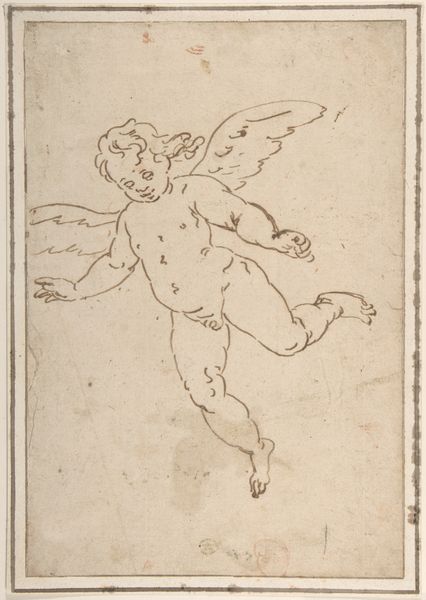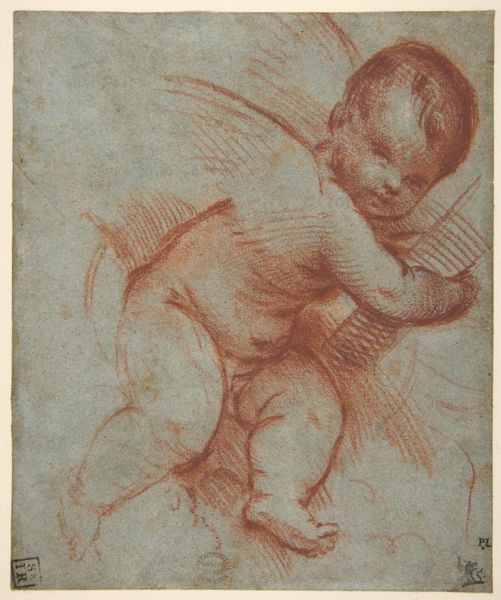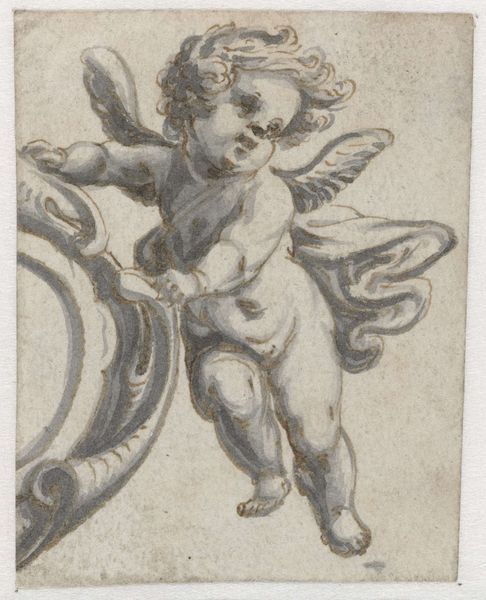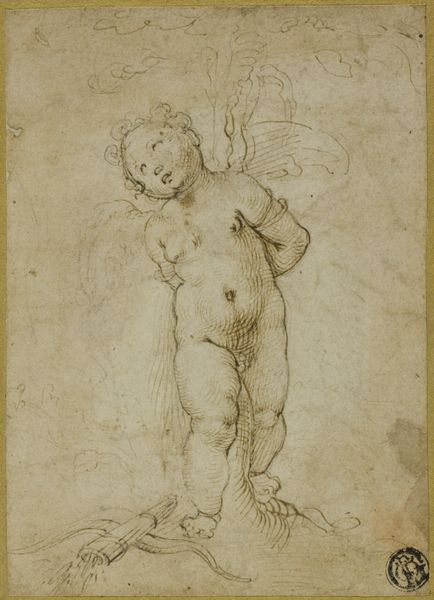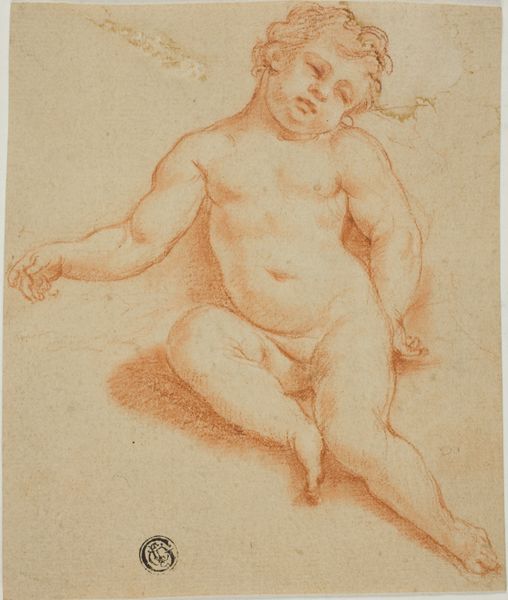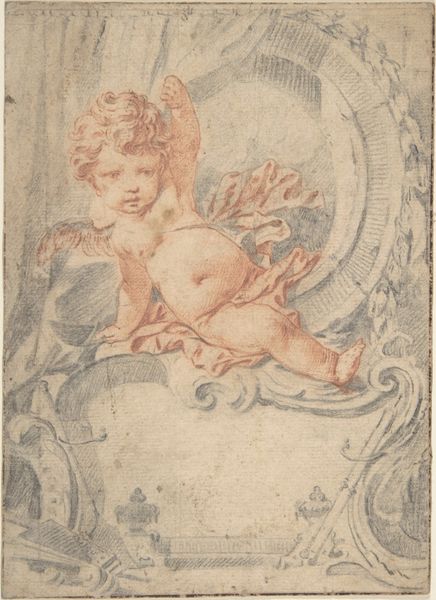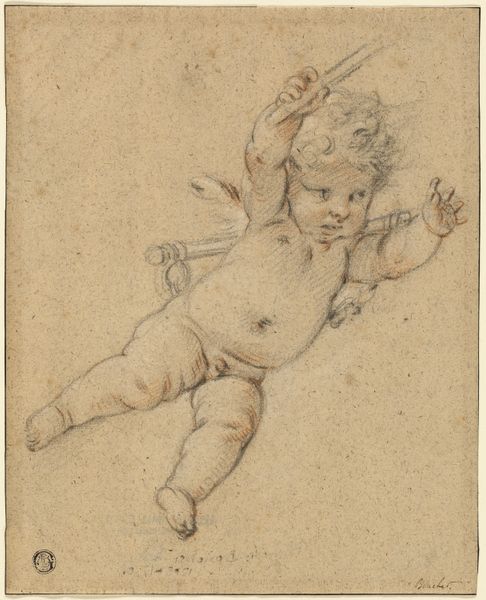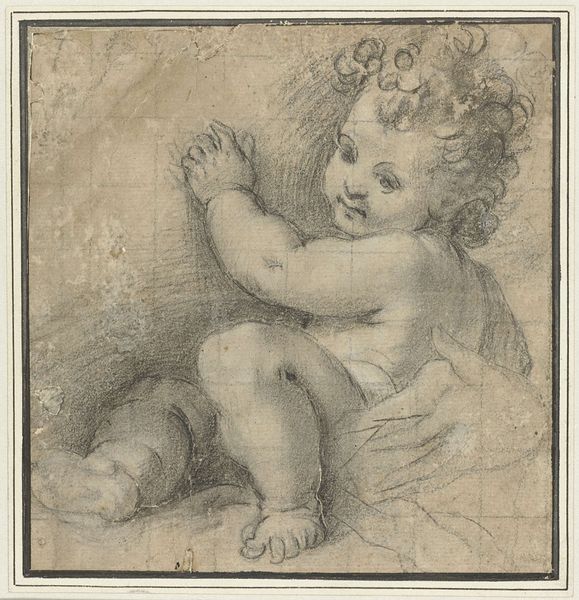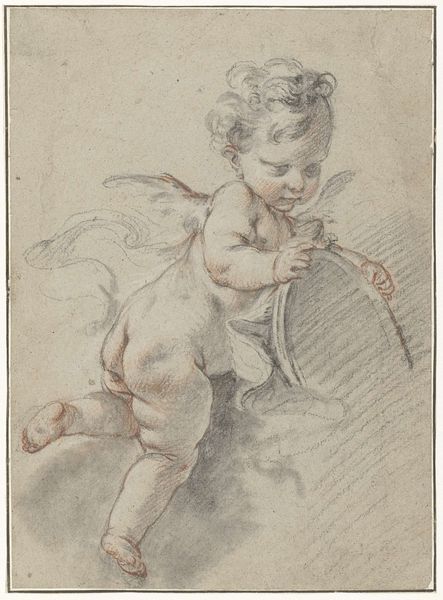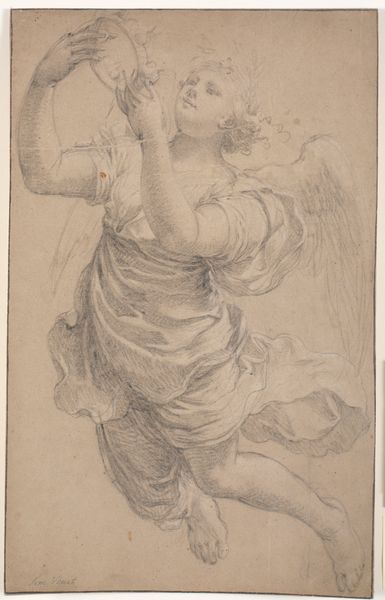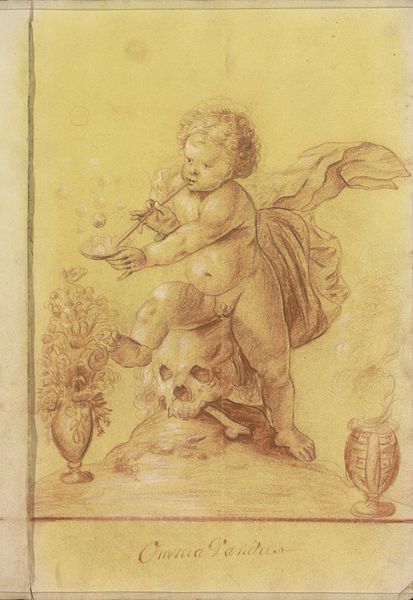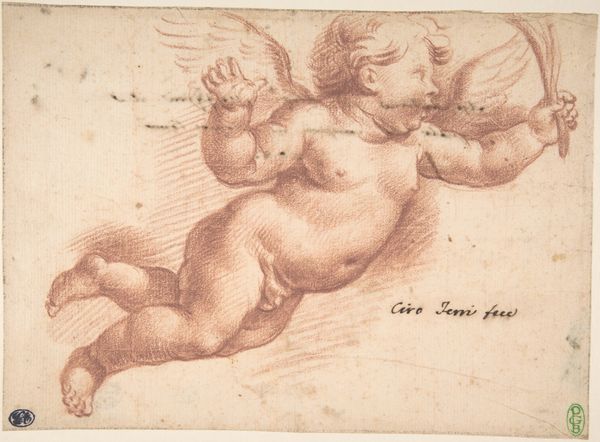
drawing, print, pencil
#
drawing
# print
#
pencil sketch
#
figuration
#
pencil drawing
#
pencil
#
academic-art
#
italian-renaissance
#
nude
Dimensions: 5-7/8 x 5 in. (14.9 x 12.7 cm)
Copyright: Public Domain
This red chalk drawing depicts a putto, a chubby male child, often winged, frequently found in Renaissance and Baroque art. Although the artist remains anonymous, the careful modeling and lifelike quality suggests it was likely made in Italy, sometime during the 16th or 17th century. The putto wasn't merely a cute figure. These images were deeply entwined with the social and religious culture of the time. Putti often appeared in religious paintings, representing cherubs or angels, so their imagery was commissioned by the church. But they also found their way into secular art, adorning palaces and villas as symbols of love, prosperity, and earthly delight for the wealthy elite. The institutions of religion and wealth shaped the demand for such images, employing artists to create these visual expressions of power and faith. To truly understand the putto, we need to delve into sources like period treatises on art, religious texts, and records of patronage. By considering the historical and institutional context, we can begin to grasp the multi-layered meanings embedded in this seemingly simple drawing.
Comments
No comments
Be the first to comment and join the conversation on the ultimate creative platform.
